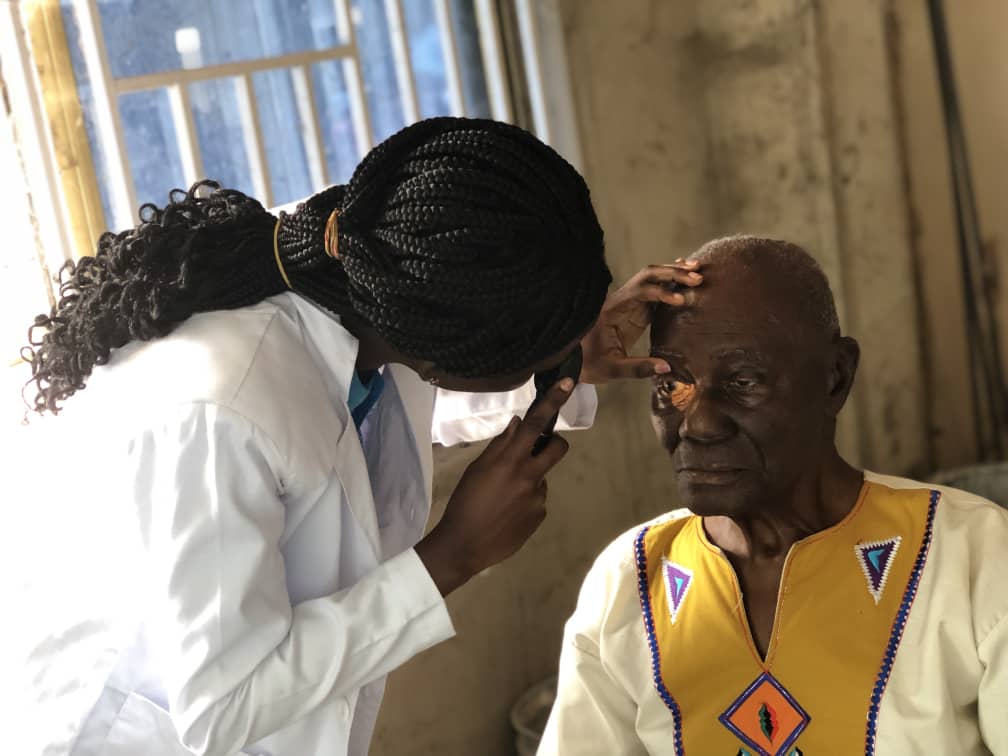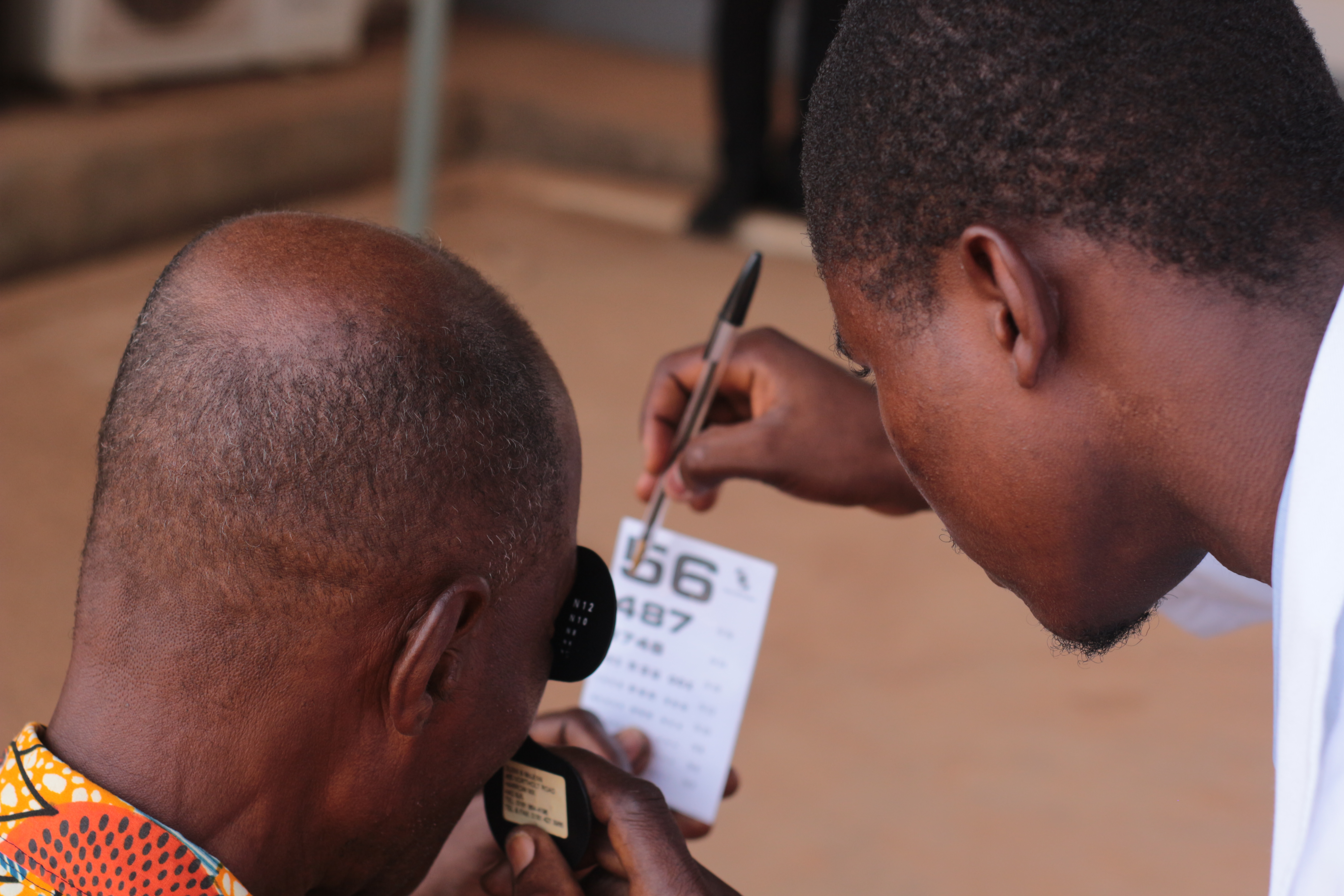Greetings to all,
It is been a while, thankfully I have found my way back. I was away for education, getting certification with the General Optical Council for pre-reg. Now I can find time to continue to share my knowledge with our amazing community again.

I hope you have been well though and I hope you are ready for us to get back on our ocular health studies as we have been doing. Since I am just getting back we are going to take things slowly and get ourselves back on track. I do hope you enjoy today's read though and that you have fun.
So for today and the next couple of writeups, I may be sharing with you are going to be looking at ocular conditions that have genetic or hereditary implications so we can come to terms with the importance and the need for us to get our eyes checked early and regularly. Today we are going to look at color vision.
Color Vision
Color vision just as its name suggests is basically our ability to see in color. For us to be able to achieve this we have some cells within our eyes called cones that in the wavelength of light and covert them into impulses enabling us to see in color. These are called cones. Some cells enable us to see in monochrome though, they are purposely for night vision or when there ain't enough illumination present. Those ones are called rods.
For the purposes of our discussion today we are going to be focusing on the cones. So like I mentioned, these cones are what enable us to see in color, they come in three forms though, we have the S, M, and L corresponding to the length of the wavelength they interpret, L for long wavelengths, S for the shorter wavelengths and I am sure you can guess for the M.
Individuals having all the cones working well within their respective ranges have perfect color vision, then there are instances where one may be missing, this could be the S, the M, or the L which would result in the conditions known as Tritanopia, Deutronopia or Protanopia respectively.
Tritanopia will not be able to perceive blue color, the Deutran will not be able to perceive green color and the Protan will not be able to perceive red color. Now what we have to know is that these are the extreme side of color vision defects where a cone may not be present entirely, what you find more common are the "anomalies", where all the cones are present but wouldn't function within the range they ought to.
And so you will have deuteranomaly having a malfunction of the green cone, having a malfunction of the red cone, and tritanomaly having a malfunction of the blue cone. And so in these instances, their sensitivities to a particular range of colors would be reduced. Now while there are a lot of tools online that could help you with being able to ascertain the state of your color vision, I would recommend that you do well to get yourself checked by the Optometrist for a proper diagnosis.
Knowing the state of your color vision comes with its own perks, you get to know which areas of your profession might be a bit difficult for you to venture into, and you may get to have special glasses that enhance your color vision and make you look even cooler than you may already be and if you happen to be in the UK you might just get free health care if you fall with the NHS scheme of free eye care.
The assessment process is not long and your Optometrist may use tests like the Ishihara color vision plates, or the HRR to assess your color vision, and all you would have to do is just identify some numbers or trace some patterns. One thing I want to add is that Color vision tends to have a lot of genetic implications and tends to be more common in men as compared to women due to its x-linked characteristics, but stress so much about these.
What I want to convey today basically is that color vision defects are something we have to know about, and that we ought to get our eyes checked routinely, if you have a child 4-5 years old who has yet to have their eyes checked, please do well to book them for a comprehensive eye examination so they could know the state of their color vision before heading into the classroom for studies to begin.
Conclusion
Ocular health should be prioritized by all of us, we should check our eyes and see the Optometrists for care and do well to live healthy, because it is said that good health is great wealth and with the eye being the window to the soul, seeing well becomes critical.
.jpg)
I am always available for all your questions about the eye. It is always a pleasure to serve you. As always, I am Dr. Ben-Nathaniel Fosu, a registered Optometrist, certified in Ghana with the AHPC and currently certified Pre-Reg with the General Optical Council, UK. Cheers, and have a great time.
Further Reading
Buck, S., Barras, R., Lee, B., Lindsey, D., Webster, M., & Werner, J. S. (2012). Color vision: introduction. Journal of the Optical Society of America. A, Optics, image science, and vision, 29(2), CV1. https://doi.org/10.1364/JOSAA.29.000CV1
Buck, S. L., Baraas, R., Bonnardel, V., Lee, B. B., Lindsey, D. T., Webster, M. A., & Werner, J. S. (2014). Color vision: Introduction by the feature editors. Journal of the Optical Society of America. A, Optics, image science, and vision, 31(4), CV1–CV2. https://doi.org/10.1364/JOSAA.31.000CV1.
Melamud, A., Hagstrom, S., & Traboulsi, E. (2004). Color vision testing. Ophthalmic genetics, 25(3), 159–187. https://doi.org/10.1080/13816810490498341.
Simunovic M. P. (2016). Acquired color vision deficiency. Survey of ophthalmology, 61(2), 132–155. https://doi.org/10.1016/j.survophthal.2015.11.004.

Interesting information! good to know about it!
Thanks for your contribution to the STEMsocial community. Feel free to join us on discord to get to know the rest of us!
Please consider delegating to the @stemsocial account (85% of the curation rewards are returned).
You may also include @stemsocial as a beneficiary of the rewards of this post to get a stronger support.